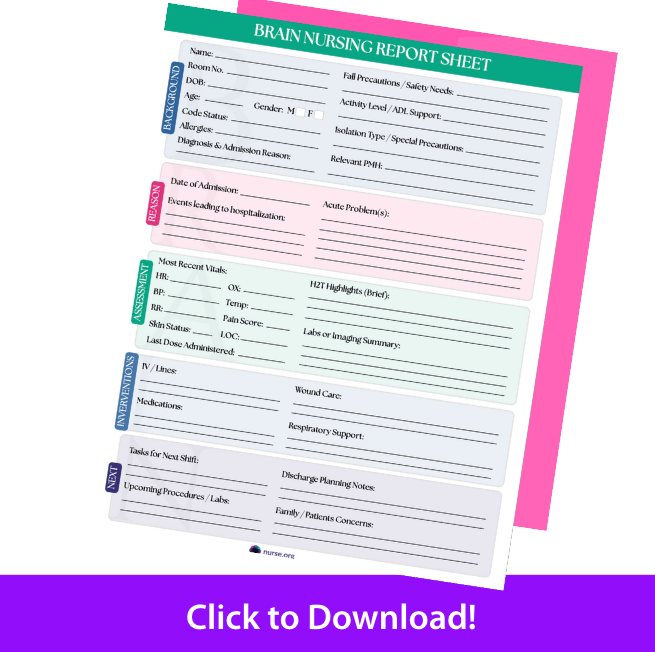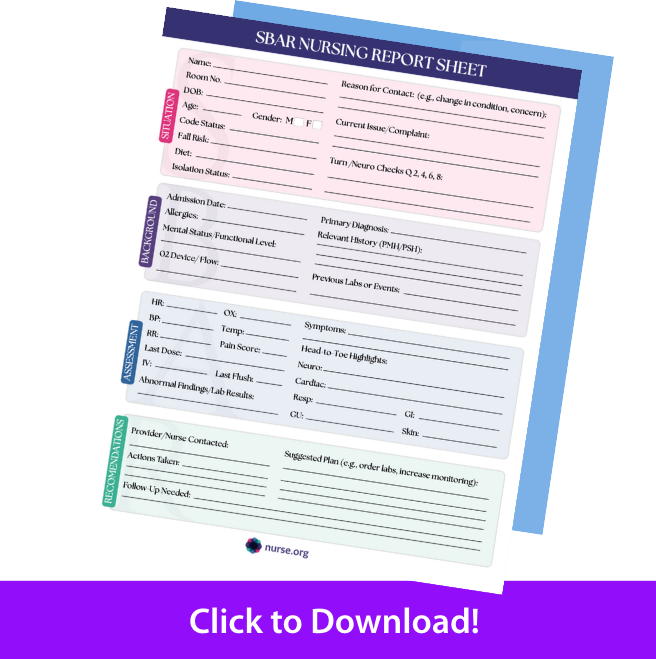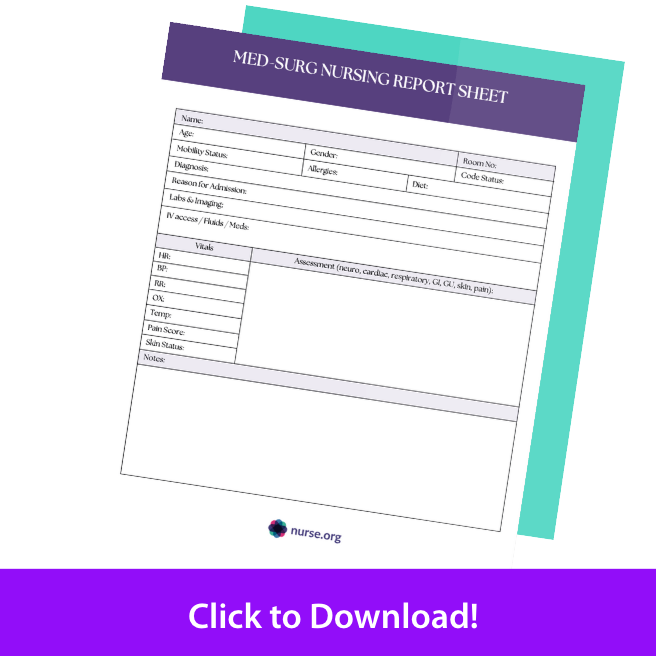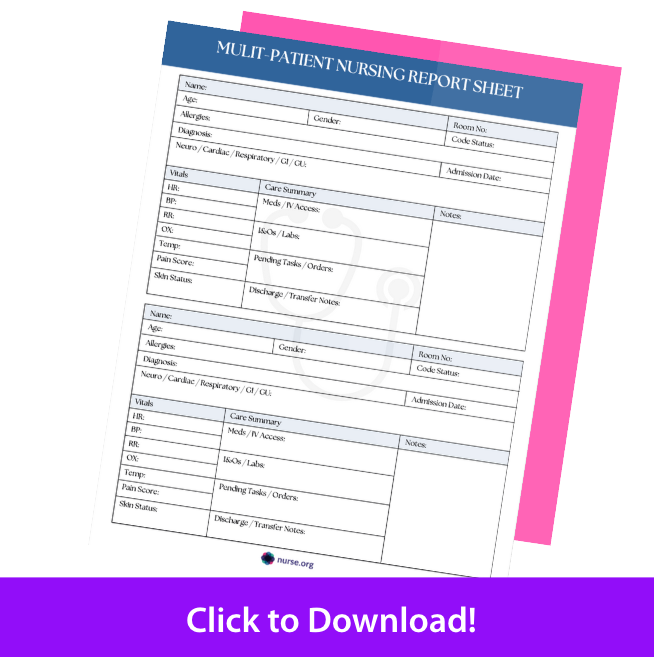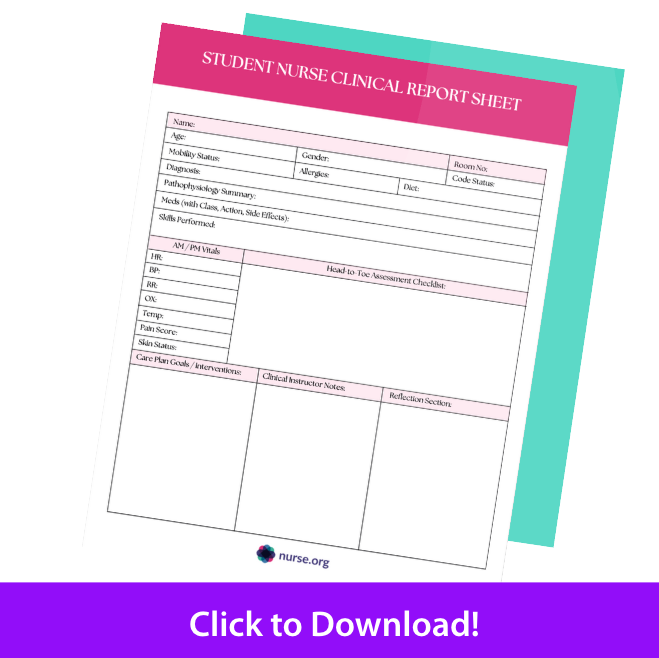What is a Nursing Report Sheet? + 5 Free Downloads!
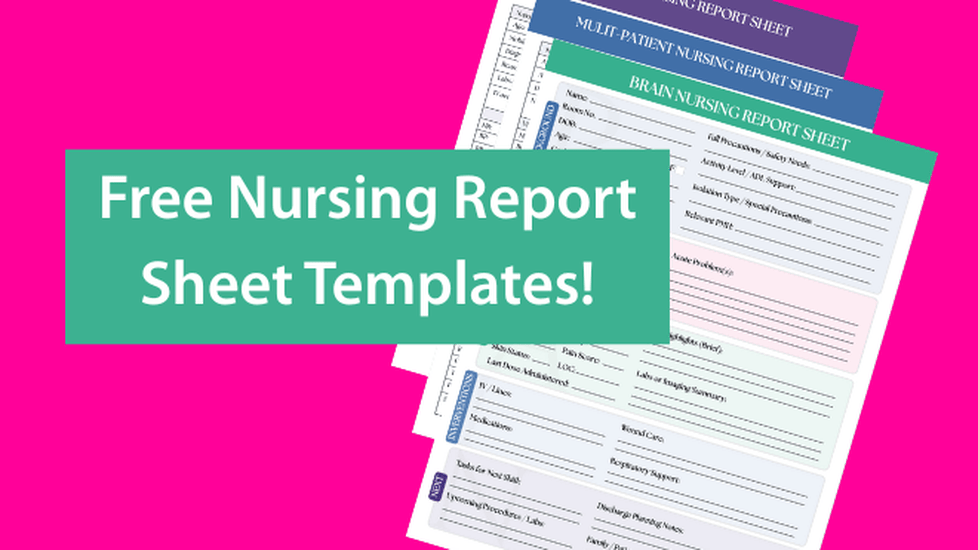

Nursing report sheets, also commonly referred to as brain sheets or patient report sheets, are a valuable pre-made tool that nurses can use during a shift to keep important patient information. Truthfully, a report sheet is essential to making it through any shift.
Keep reading to learn more about nursing report sheets and get free templates you can use!
What is a Nursing Report Sheet?
A nursing report sheet is a customized reference that contains essential information regarding the patient and their medical history.
How Nurses Use Brain Sheets
Brain sheets relay the “down and dirty” about your patient. While every nurse should review their patient’s charts at the beginning of and throughout their shift, a nursing report sheet helps keep tasks and “to-do’s” organized.
How Hospitals Use Them
Some hospitals have one nursing report sheet that is updated every shift with a specific patient. Other hospitals expect nurses to write a new report sheet with each shift.
Report sheets may travel with the patient when transferred between units and are ultimately discarded when the patient is discharged.
How to Create a Nursing Brain Sheet
What’s included on a nursing report sheet varies depending on the hospital, unit, and individual. It will depend on the expectations and policies of the hospital, and it’s crucial to speak to the nurse educator to determine the unit’s best practices.
Examples of what to include on a nursing report sheet include:
- Patient Information, including name, date of birth, room number
- Medical diagnosis
- Attending medical provider/coverage team
- Medication(s)
- Allergies
- Vital Signs
- Lab results, pending lab work
- Important procedures
- Family information
- To-do(s) for shift
- Nursing notes
Why Do You Need a Nursing Report Sheet?
Nursing report sheets can be the key to success when organizing information about your patients, primarily if you work on a medical-surgical floor and have a higher patient-to-nurse ratio.
There are some key benefits of the nursing report sheet, including:
- Provide accountability
- Improving the safety of the patient
- Standardized report
- Fast access to patient information
- Keeping charting organized
- Organizing patient care
How to Read a Nursing Report Sheet
Some nurses will read it from top to bottom, while others will organize it based on systems. Most experienced nurses prefer systems. Double-sided report sheets are even better, with one side having all the patient and medical information and the reverse side having an hourly checklist to help organize your shift.
To use a nursing report sheet, start by including the information in the chart, including basic patient personal information and health history. The remainder can be filled out during the shift report or after more time examining the chart.
Download 5 Free Nursing Report Sheet Templates
BRAIN Nursing Report Sheet Template
SBAR Nursing Report Sheet Template
Med-Surg Nursing Report Sheet Template
Multi-Patient Nursing Report Sheet Template
Student Nurse Clinical Report Sheet Template

